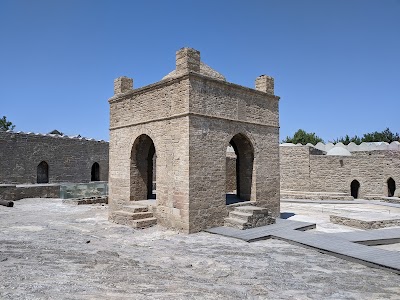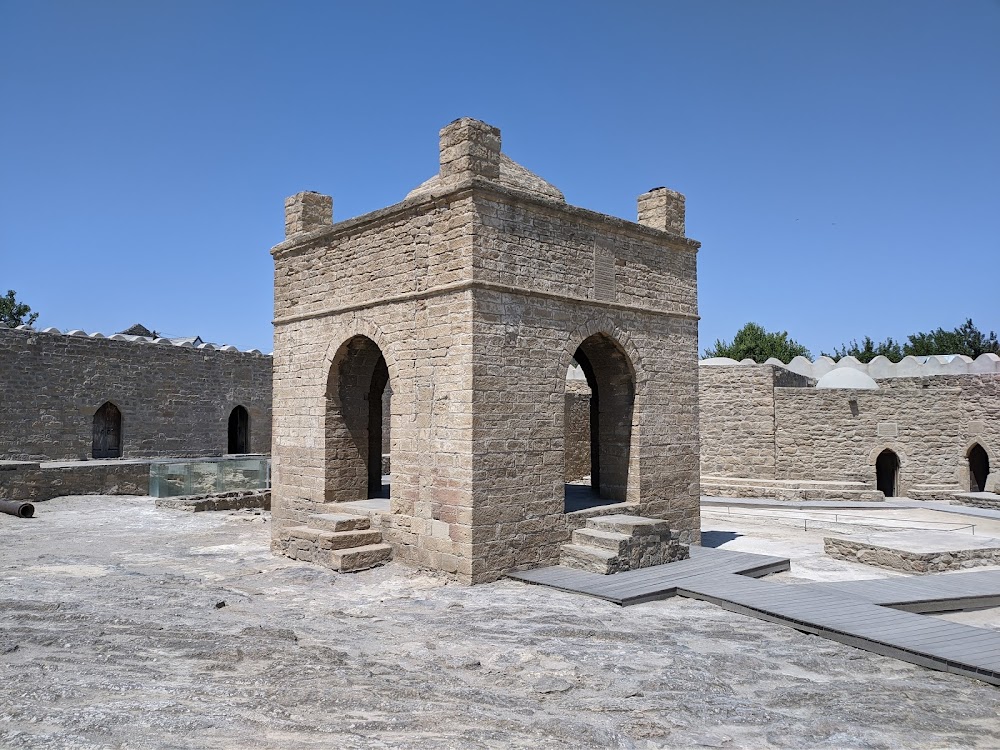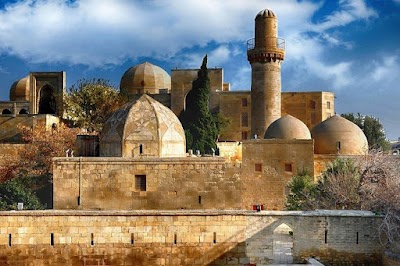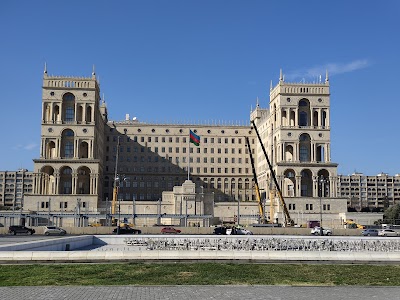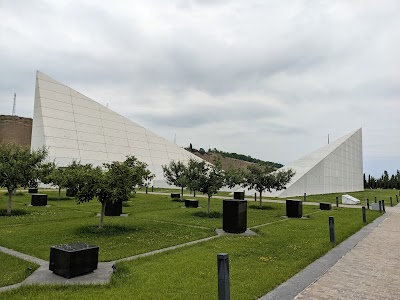Ateshgah Fire Temple (Atəşgah)
Overview
The Ateshgah Fire Temple, nestled in the suburbs of Baku, Azerbaijan, is a remarkable historical and architectural jewel that enchants visitors with its rich heritage and intriguing history. Often referred to as the “Fire Temple of Baku,” this ancient site offers a captivating glimpse into the profound religious traditions, cultural exchanges, and commercial interactions that have shaped the region over millennia.
Located in Surakhany on the Abşeron Peninsula, an area renowned for its natural gas abundance, the temple’s significance dates back centuries. Historical evidence suggests that it served as a center of religious activity during the era when Zoroastrianism, one of the world's oldest continuously practiced religions, thrived in the region. Zoroastrian priests, known as Magi, would worship the sacred fire, a natural phenomenon fueled by flammable gases seeping from the earth. The temple underwent a significant transformation in the 17th and 18th centuries as it became a site of Hindu worship, largely due to an influx of Indian traders who made Baku their home.
The Ateshgah complex features a pentagonal courtyard encircled by small cells that once served as a hostel for pilgrims and devotees. At its heart lies the main altar, adorned with an eternal flame that is now sustained by a gas pipeline but was originally ignited by natural gas. The central altar, resembling a small pavilion, showcases an architectural style influenced by Persian, Indian, and local design elements. This fusion of styles exemplifies the rich tapestry of cultures and religions that have converged at Ateshgah over centuries.
As a site of immense historical significance, Ateshgah was a prominent pilgrimage destination for both Zoroastrians and Hindus. Numerous inscriptions in Sanskrit and Gurmukhi highlight the influence of the Indian community and the intercultural connections that flourished in Baku. Ateshgah stands as a testament to the interconnectedness of the Silk Road, illustrating how trade routes facilitated not just commerce but also the exchange of religious and cultural ideas.
One of the most fascinating aspects of Ateshgah is the ongoing debate regarding its precise origins and the periods of Zoroastrian and Hindu worship. While the existing structure is primarily associated with Hindus from the 17th and 18th centuries, archaeological findings suggest that the site may have been a significant religious center since the early Common Era. Modern interpretations often delve into the dynamics of migration, trade, and the spread of religious practices to uncover Ateshgah's layered past.
Although the temple complex fell into disuse in the late 19th century as the natural flames dwindled due to extensive gas and oil drilling, it has been meticulously preserved and transformed into a museum. Today, it serves as a protected historical monument, attracting thousands of tourists annually who come to admire the sacred fire, explore museum exhibits, and delve into the temple’s rich history.
Visitors to Ateshgah can immerse themselves in a truly sensory experience—a fusion of sight, sound, and ambiance that evokes the temple’s storied past. The architecture, with its understated lines and spiritual atmosphere, resonates with the multifaceted history embedded within its walls. Information plaques and guided tours are available in multiple languages, offering insightful narratives about the temple's significance, the lives of its practitioners, and the vibrant culture that thrived here.
Moreover, the cultural symbolism of fire cannot be overlooked. Fire has universally represented divine presence, purification, and life force across various religious traditions. At Ateshgah, the ever-burning flame serves as a powerful motif, symbolizing not only divine eternity but also the enduring essence of human spirituality and cultural resilience.
In conclusion, the Ateshgah Fire Temple in Baku is more than just a historical landmark; it embodies Azerbaijan’s rich cultural tapestry, interwoven with threads of diverse religious and commercial exchanges. It stands as a lasting symbol of the intersection of ancient religious practices and the dynamic history of human connectivity. A visit to Ateshgah offers an enlightening journey into the past, profoundly enriching one’s understanding of the region’s cultural and historical heritage.


